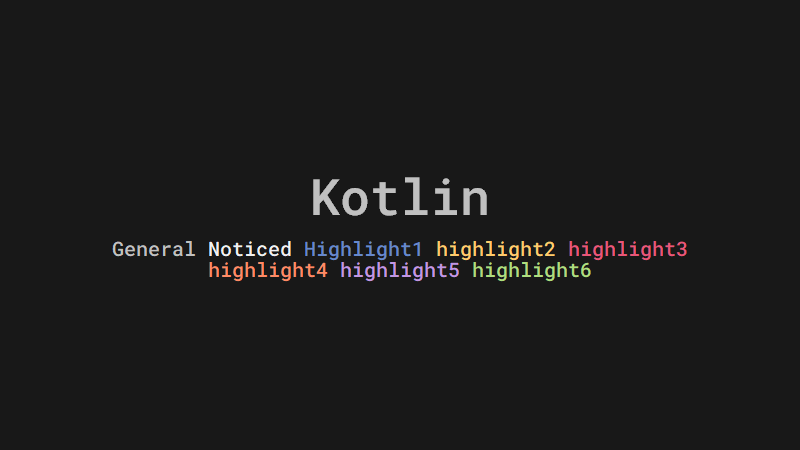
Structural Equality ('==')
== compare the data of two variables
-
Don't misunderstand this with Java
==, both are different -
In Kotlin,
==operator only compares the data or variables, whereas in Java or other languages==operator generally used to compare the references. -
The negated counterpart of
==in Kotlin is!=which is used to compare if both the values are not equal to each otehr.
Referential equality ('===')
=== compare the reference of two object
-
It will only be
trueif both the objects are pointing to the same object. -
The negated counterpart of
===in Kotlin is!==which is used to compare if both the values are not equal to each other. -
Primitive types at runtime (for example,
Int), the===equality check is equivalent to the==check.
.equals method
.equals compare the content of the objects just like == operator, but it behaves differently in case of Float and Double comparison
-
equals(other: Any?)method is implemented inAnyclass and can be overridden in any extending class. -
The difference between
==and.equalsis in case ofFloatandDoublecomparison,.equalsdisagress with the IEEE 754 Standard of Floating-Point Arithmetic.
What does disagree with IEEE 754 Standard for Floating-Point Arithmetic mean?
NaNis considered equal to itselfNaNis considered greater than any other element including POSITIVE_INFINITY-0.0is considered less than0.0
Example
Compare two primitive type Int variables
val int1 = 10
val int2 = 10
println(int1 == int2) //true
println(int1.equals(int2) //true
println(int1 === int2) //trueWrapper class instead of Primitive datatype
val first = Integer(10)
val second = Integer(10)
println(first == second) //true
println(first.equals(second)) //true
println(first === second) //falseClass object
class Employee(val name: String)
val emp1 = Employee("Dmitry")
val emp2 = Employee("Dmitry")
println(emp1 == emp2) //false
println(emp1.equals(emp2)) //false
println(emp1 === emp2) //false
println(emp1.name == emp2.name) //true
println(emp1.name.equals(emp2.name)) //true
println(emp1.name === emp2.name) //trueThe reason for the above comparison is obvious, As Empoyee is not a primitive datatype or wrapper class, all three compared the references, which returns false for all three checks. But in the case of string comparison, if only checks the contents of the string which were equal so it returns true for every case.
Wait, but you said
==and.equalsonly compares the contents of the object which were equal in our case.
Exactly.
- But the content comparison only works if it's a
dataclass.- In case of normal class, the compiler consider both the objects as the differenct objects even if the content is same.
- If it's a
dataclass, the compiler compares the data and returntrueif the content is same.Let's change the above class to data class.
data class Employee (val name: String) val emp1 = Employee("Suneet") val emp2 = Employee("Suneet") println(emp1 == emp2) //true println(emp1.equals(emp2)) //true println(emp1 === emp2) //false println(emp1.name == emp2.name) //true println(emp1.name.equals(emp2.name)) //true println(emp1.name === emp2.name) //true
Negative zero and Positive zero
IEEE 754 Standard for Floating-Point Arithmetic
val negZero = -0.0f
val posZero = 0.0f
println(negZero == posZero) //true
println(negZero.equals(posZero)) //false
println(negZero === posZero) //trueIn case of Float and Double comparison, .equals disagrees with the IEEE 754 Standard for Floating-Point Arithmetic, it returns a false when -0.0 was compared with 0.0 whereas == and === returns ture.
Few things to keep in mind
- As there is no constructor as
String("")is Kotlin, all string comparison will givetrueif the content will be equal. - There's no point in optimizing code when comparing to
nullexplicitly.a == nullwill be automatically translated toa === nullas null is a reference and at the end, it will a reference check.
